Old Masters
A SENTIMENTAL GEOGRAPHY
Love, like Air, Winds around the World
It is hard to explain to kids today, when with one click you can check whether the beach in Cape Verde is crowded or enter the most secret parts of the Louvre. And when everyone thinks that, using copy and paste, they can become travel writers or reporters just like that. We will now remind of the times when true masters walked the roads of the world. They prepared for months, read everything they could find about the places they were heading to. Those who were able and knew. They taught us how to travel with our whole being and through the whole world, how to really watch and listen, recognize colors and scents, taste food and wine, remember melodies and shadows, eye beauties and kilometers. They were pilgrims full of love and reported about it
By: Petar Branov
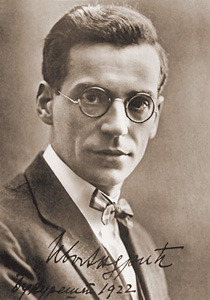 In the following lines, with an apology to all whose travel logs from whatever reason did not jump into this train, we give in brief – due to lack of space – some of the travel logs our famous writers and reporters shared with their readers. Those who traveled and wrote; those who were able to travel and knew to write. And all this to the (jealous indeed) joy of us, readers, who couldn’t do it nor knew how. In the following lines, with an apology to all whose travel logs from whatever reason did not jump into this train, we give in brief – due to lack of space – some of the travel logs our famous writers and reporters shared with their readers. Those who traveled and wrote; those who were able to travel and knew to write. And all this to the (jealous indeed) joy of us, readers, who couldn’t do it nor knew how.
Ivo Andrić, writer and diplomat, Mr. Writer, was able to and knew how. And knew it well! Kids today would say ”Really cool!” In the middle of summer, ”On a rock in Počitelj”. And so it goes, with apologies for necessary shortening:
”Počitelj. Standing on one leg, holding on to the ground with one foot, and only part of it. Neither an easy nor comfortable position. The history of this strange fortified settlement could not have been joyful. Its whole meaning has always been in its being fortified, and it was a settlement only for necessity and by the way. Being a city of stone for six centuries, in the steep, rocky and narrow valley of the Neretva, in a difficult and exposed location, is neither an easy nor an enviable fate…
... The glimmering of the noon heat in these rocks, which, before becoming a ruin, lived under the hand of people of the past serving them, on plants which the stones moved away with their silent yet powerful strength, is not a naked and mute game of elements for me; it is the speaking of life and the image of what is now and what will be in the great and changeable and eternally same drama of human existence…
... Behind the steep slope of the hill, behind its sharp dark line drawn high in the sky, like a bunch of black seeds thrown from an invisible hand, a crowd of jackdaws poured out. It seems that even birds here do not fly peacefully like other flocks of birds. Silently and softly, dark birds fell upon the tower, stuffed its stockrooms, and, as if making a funeral decoration, ornamented small windows with a black border and completed the landscape.
People still live here. Few of them used to living in a former city. In such summer days, everyone healthy and able to work goes out of town, to the fields. Down there, downstream, by the Neretva, stand their merry and fertile fields, and here are their old houses, hidden among ruins...”
SREM IN TOSCANA
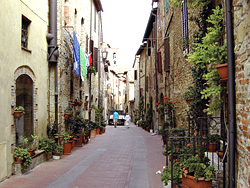 Brilliant Isidora Sekulić, with incomparable style, somehow at the same time, traveled through the North. This is how she wrote about sailing on the Norwegian lake of Nurfjur, where she experienced a storm, in her Letters from Norway: Brilliant Isidora Sekulić, with incomparable style, somehow at the same time, traveled through the North. This is how she wrote about sailing on the Norwegian lake of Nurfjur, where she experienced a storm, in her Letters from Norway:
”The lake water is so clear that absolutely everything reflects in it. Mountains, trees, small houses, goats and sheep; the thick furred cattle on rocks resembles packages of wool. The lake narrows to the south, the mountains accumulate, the glaciers approach, and all around, from the heights of six or seven hundred meters, waterfalls. Every now and then you can see a small ice avalanche suffocating the waterfall, the ice and the stone and the waterfall all get carried away somewhere deep into an abyss, then you hear crumbling, the icy water splashes on another side and opens like a big white fan; while up there, as if nothing had 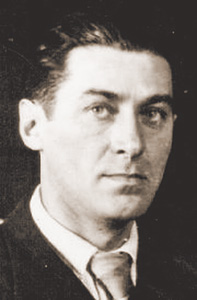 happened, the clear liquid of the waterfall flows again. Then, in the immediate vicinity of all this, you notice a meadow and a small house, and a bunch of sheep with thick wool, which, during the winter, feed on algae thrown out to the land by winds and storms. And behold, they are also there, tiny people who spend their whole life at the foot of the foot...” happened, the clear liquid of the waterfall flows again. Then, in the immediate vicinity of all this, you notice a meadow and a small house, and a bunch of sheep with thick wool, which, during the winter, feed on algae thrown out to the land by winds and storms. And behold, they are also there, tiny people who spend their whole life at the foot of the foot...”
Miloš Crnjanski, also writer and diplomat, also Mr. Writer, liked to travel and write. Besides other landscapes, he took readers of Belgrade papers to Tuscany, the most beautiful part of Italy, both by its landscapes and culture. He declares his love to it, his Tuscany. This is what it looks like, in fragments:
”... So I pushed through the horrible Slavic sorrows and then, when I did not want to know about my closest ones and did not know how to return to our villages, I noticed the similarity, the same scent and same essence of my Srem and Tuscany, and everything became quiet and turned to good, because Siena means love, and love, like air, winds se around the world...
... All night, yellow and blue, in the moonlight, Siena was shouting. The world was swarming in its deep stone inside, the same stone which has been blue ever since the times Siena made the agreement with the Nemanjić dynasty...”
THE RIVER BESIEGED THE CITY
Rastko Petrović, member of a family in which stories about art were served instead of meals, was, however, obsessed with Africa. At the time when only a few people even knew where it was.
”The mountains appearing in the horizon, which we are heading to, are the shores of the English colony Sierra Leone, Lion Mountains, and the islands in front of them look like volcanoes. At around ten, we begin sailing very close to the long gentle islands, separated from the mainland only with stripes of water. The rusty red earth, the one that colors the fingers like saffron, red as the soil of the Los archipelago, or Kanakria, is covered with thick greenery. Palms of all kinds, fromages, bread trees, so only in rare places the soil remains widely red, saturated and bloody. Small blue hills are immediately by the water, thick green bushes and narrow short beaches, much yellower and more shining than gold (when I use the word gold, it is only to give the exact description of the color and shine)...”
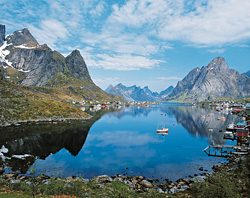 Zulfikar Zuko Džumhur has been a traveler full of love, wherever he was. And there were only a few places he had not visite. The readers of Politika found him in Spain, in Toledo, ”On the Gates of the City”, in the autumn of 1979. Zulfikar Zuko Džumhur has been a traveler full of love, wherever he was. And there were only a few places he had not visite. The readers of Politika found him in Spain, in Toledo, ”On the Gates of the City”, in the autumn of 1979.
”I still live in the miraculous city of Toledo, I still stand on the ancient bridge of Al Kantara.
Most of the rivers in the world cut cities and settlements in their central part, or flow completely on the side, as if they cannot wait to go their way to the fields, valleys or among mountains and gorges, almost indifferent towards the city and anything happening in it.
Only a few rivers, such as the Tahoe, flow around their city, surround it from each side, guard it jealously, want to be the mirror of its beautiful face, separate it in wars from enemies and foes, preserve it from misfortunes and evil like a talisman, slow down their flow as if they want to stay in it as long as possible, to become part of it and participate in everything happening in the city from its creation to the very day...”
THE SEA THAT STOPS SHIPS
The unsurpassable adventurist from our lands, serious and curious Tibor Sekelj (1912-1988) wrote in his own style. He traveled to many places, often risking his life. We give here a part of the story ”The Palm Falls at Midnight”, from his journey to Papua New Guinea, where he almost ended in the pot of the local inhabitants who liked having human meat on their dinner table.
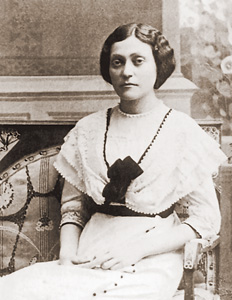 ”We sailed near the shore of the Chambri Lake, immediately by the village whose warriors exterminated the inhabitants of three nearby villages and became rulers of the whole territory. Then Ajod (Sekelj’s guide – remark by P. B.) found a narrow canal through the shallow waters grown into reed, and after half an hour we reached the river Sepik, as wide as the Danube. Banks grown in forests. A village here and there... ”We sailed near the shore of the Chambri Lake, immediately by the village whose warriors exterminated the inhabitants of three nearby villages and became rulers of the whole territory. Then Ajod (Sekelj’s guide – remark by P. B.) found a narrow canal through the shallow waters grown into reed, and after half an hour we reached the river Sepik, as wide as the Danube. Banks grown in forests. A village here and there...
... Around noon we were approaching the village of Tambanaum, for which I knew it was one of the most beautiful ones in the area. We were surprised when from afar we heard the beating of drums, and immediately afterwards, sounds of loud singing...”
Miroslav Miro Radojčić, reporter of Politika from London and New York for many years, Mr. Reporter, wrote about the ”City of Cities”, New York, in June 1959 in the following manner:
”In our second encounter, seen from the ship, New York seemed both amazing and intimidating. As if everything that was once normal suddenly became grotesque, and then, in a rush, giant houses were erected to defy the sky and laws of balance. Looking from the ship, it was even difficult to believe that two-legged creatures were walking in their foot, the ones we used to meet, and that, immediately under the Rockefeller skyscraper, in the heart of Manhattan and its human flood, lively girls enjoyed skating on artificial ice… A metropolis scattered, rambling, but beautiful in its own way. Beautiful at night when the lights from Broadway and billions of windows in skyscrapers twinkle and give the eye a vision anticipated only in imagination…”
IT IS ALWAYS SPRING IN BELGRADE
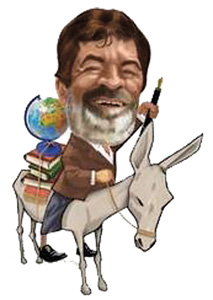 Bogdan Ibrajter Tane, another legend from Politika, recently visited the Krčedin Ada river island and reported to its readers: Bogdan Ibrajter Tane, another legend from Politika, recently visited the Krčedin Ada river island and reported to its readers:
”We were driven to the Krčedin Ada by the famous boatman Raja Marvoš and his son Mile. Raja is eighty-two, but he still throws fishermen nets, hunts wild ducks in winter, and in summer drives travelers and swimmers to the Danube river islands and sandbanks. At the bank of the ’Last Oasis’, above the ferry and dark little boats, there is a table with an inscription visible from the Danube waters: ’An oasis of beauty and peace. Contemporary man, stop for a while, time here has stopped a long time ago...’ In the ’Last Oasis’ with the ranch, we were greeted by a bunch of a dozen dogs, the host Mile Plavšić, Paja Skorupan, Sejdo Islamović, constant inhabitants of the Ada, and a dozen of other people, women and children from Kovilj, Krčedin, Beška, Gardinovci. They are cattlemen who breed their horses and cows in the Krčedin Ada. Once a week, usually on Sundays, they come to the marsh by boats. They bring stone salt and corn flour, see their cattle, and spend the weekend together in nature...”
For the end of this, not so long story, reminder of how one traveled in the past with words and adequate imagination, here is a short excerpt from the journeys through Belgrade of the writer and painter who collected the dust of a big part of the planet on his moccasins. Here is Momo Kapor:
”... Generally speaking, why travel anywhere from Belgrade when it has almost everything? We have ’London’, ’Moscow’, ’Little Paris’, ’Athens’, ’Beijing’, ’Verona’, ’Venice’, we even have the whole ’Balkan’! An evil person will certainly notice that Belgrade doesn’t have the sea. Nonsense! What about ’Biograd at the Sea’? What about ’Blue Adriatic’, ’Boka’, ’Brioni’, ’Rab’, ’Kornati’, ’Split’? After the second liter of wine, you rock as if you were on waves. Besides, it is always ’Spring’ in Belgrade! (The tastiest beef stew in the city!)
The extraordinariness of Belgrade is best proven by the fact that it is easier to reach it from Sidney or San Francisco than to get a ride from the railway station to Terazije, because no taxi driver wants to drive such a short route...”
***
Fisherman
In a way, Mihailo Petrović, better known as Mika Alas (Mika the Fisherman), a scientist of international reputation, was also an adventurer. All the places he had reached! Seas and islands, continents and so many adventures. This is written in his books of travel logs published by Srpska književna zadruga, as well as his Novel of the Eel. With a bit of sorrow, we will leave out this story here, because National Review will give it a special place in its following edition. |
